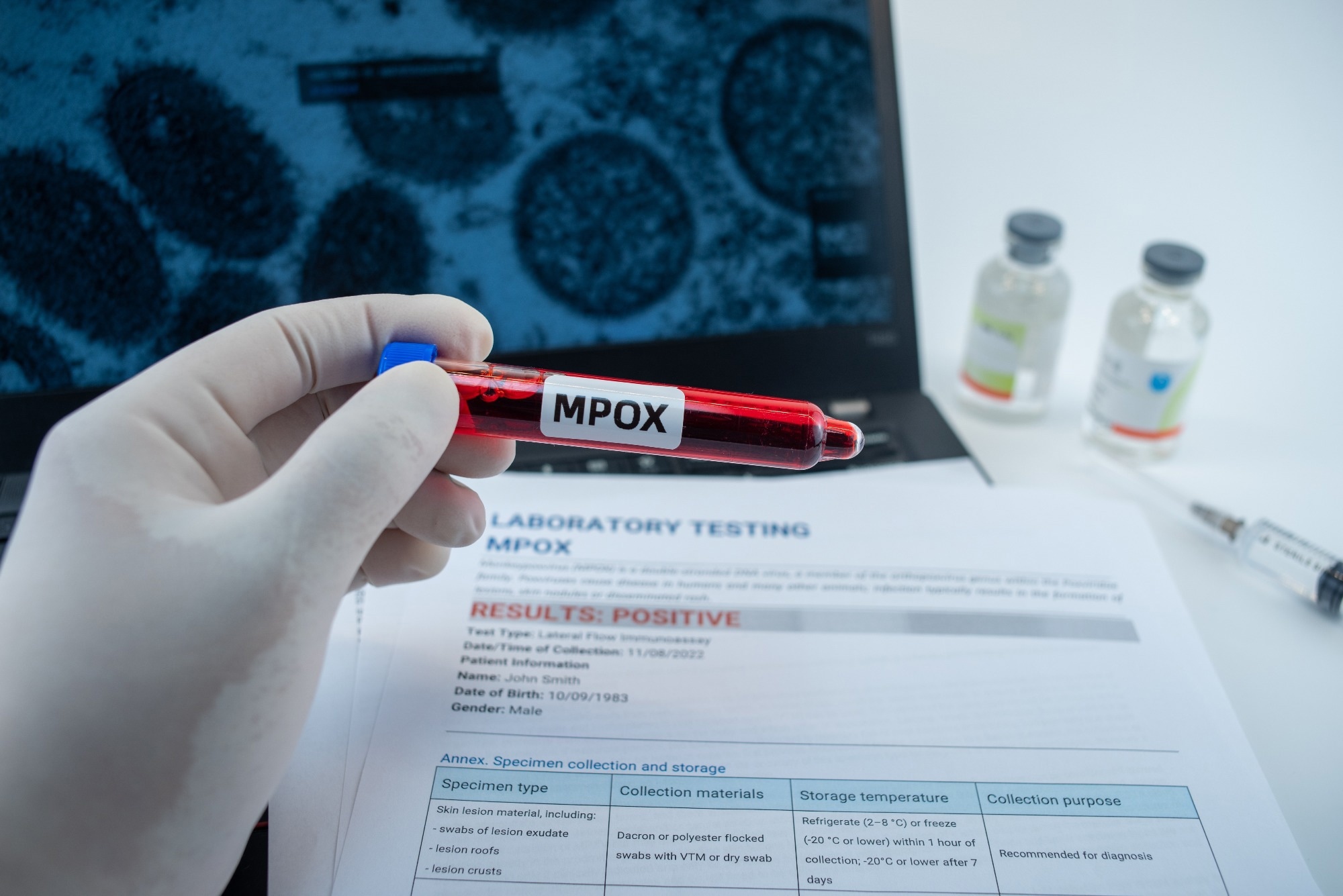A recent study published in The Lancet Microbe summarized the evidence for respiratory transmission of mpox.
 Study: Mpox respiratory transmission: the state of the evidence. Image Credit: QINQIE99/Shutterstock
Study: Mpox respiratory transmission: the state of the evidence. Image Credit: QINQIE99/Shutterstock
Accelerated transmission of clade II mpox virus (MPXV) occurred in humans in 2022, resulting in thousands of cases globally. MPXV acquisition routes include percutaneous exposure (direct skin exposure), mucous membrane exposure (oral, vaginal, and rectal mucous membranes), and infectious virus particle inhalation.
Infection sources include humans, animals, and contaminated fomites. In the current mpox outbreak, the prevalence of anogenital lesions in cases suggests that sexual contact is the primary route of infection. In the present study, the authors described the evidence on MPXV respiratory transmission from studies conducted between 1961 and 2022.
Respiratory transmission of MPXV in animal models
Studies in non-human primates and prairie dogs have shaped the understanding of mpox transmission. These dogs are useful in studies as they are susceptible to infection, exhibit longer incubation periods, and can transmit the virus. Moreover, prairie dogs are the only small animals that develop the characteristic skin rash observed in human mpox cases. Non-human primates are also valuable, given the genetic proximity to and similar disease presentation as humans.
A study showed that experimentally inoculating through the upper respiratory tract of prairie dogs can establish the infection model. In 2013, respiratory transmission with clade I MPXV was demonstrated in prairie dogs. Transmission to naïve dogs was not detected with clade II MPXV. In the 1970s, studies on non-human primates also suggested respiratory transmission of MPXV.
Respiratory manifestations in humans
Severe respiratory distress has been observed in the late disease course with clade I MPXV infection. Oral lesions and oropharyngeal signs/symptoms have been reported historically and during the 2022 outbreak. A sore throat was commonly observed in up to 37% of cases in 2022. Cough was reported in nearly 50% of patients before 2022, but in 2022, it was less common, along with dyspnea and nasal congestion.
Historical and recent studies have described viral isolation from oral/respiratory anatomical sites. In a case series in the United Kingdom (UK), clade II MPXV DNA was isolated from the upper respiratory tract when respiratory symptoms were absent and even after the resolution of skin lesions. In some patients, viral shedding continued from the upper respiratory tract for over three weeks.
Mpox outbreaks in humans
Most research on mpox in humans before 2022 has been conducted in Africans. Close contact within households is implicated in long transmission chains spanning several generations. In the 2003 outbreak in the United States (US), all subjects with symptomatic mpox were in contact with prairie dogs or contaminated fomites.
Being near the infected animal was not associated with MPXV infection. Moreover, healthcare professionals were not infected, even when most reported inconsistent use of an N95 respirator or a surgical mask. The human-to-human transmission was documented during the mpox reemergence in Nigeria in 2017 in five individuals, including one healthcare worker and four incarcerated individuals.
During 2018-21, eight travelers from Nigeria to the US, UK, Israel, and Singapore were diagnosed with mpox. Four were symptomatic during the flight, and contact tracing identified no additional cases. Notably, the use of face masks during flights in 2021 as part of the public health measures against coronavirus disease 2019 (COVID-19) could have prevented respiratory transmission.
In endemic regions, healthcare personnel are at a higher risk of infection than the general public. However, one study conducted in Colorado, US, in 2022 observed that healthcare workers exposed to mpox cases were not infected. Outbreak and clinical data showed that mpox transmission occurs during close contact for prolonged periods, and respiratory transmission between humans has not been reported in residential/congregate settings.
Concluding remarks
Together, the authors summarized the different kinds of evidence to understand the contribution of respiratory transmission to the spread of mpox. Respiratory symptoms and the isolation of viral DNA from the respiratory tract suggest transmission by the respiratory route but do not definitively reflect respiratory transmission.
Additionally, environmental surveillance studies observed replication-competent MPXV on surfaces and in the air, but the presence of the virus does not imply infectivity or transmission. Further, outbreak analyses with improved documentation of exposure histories could help determine the definitive transmission mode. So far, the odds of respiratory transmission appear low based on the available evidence, but studies should continue to assess this possibility.